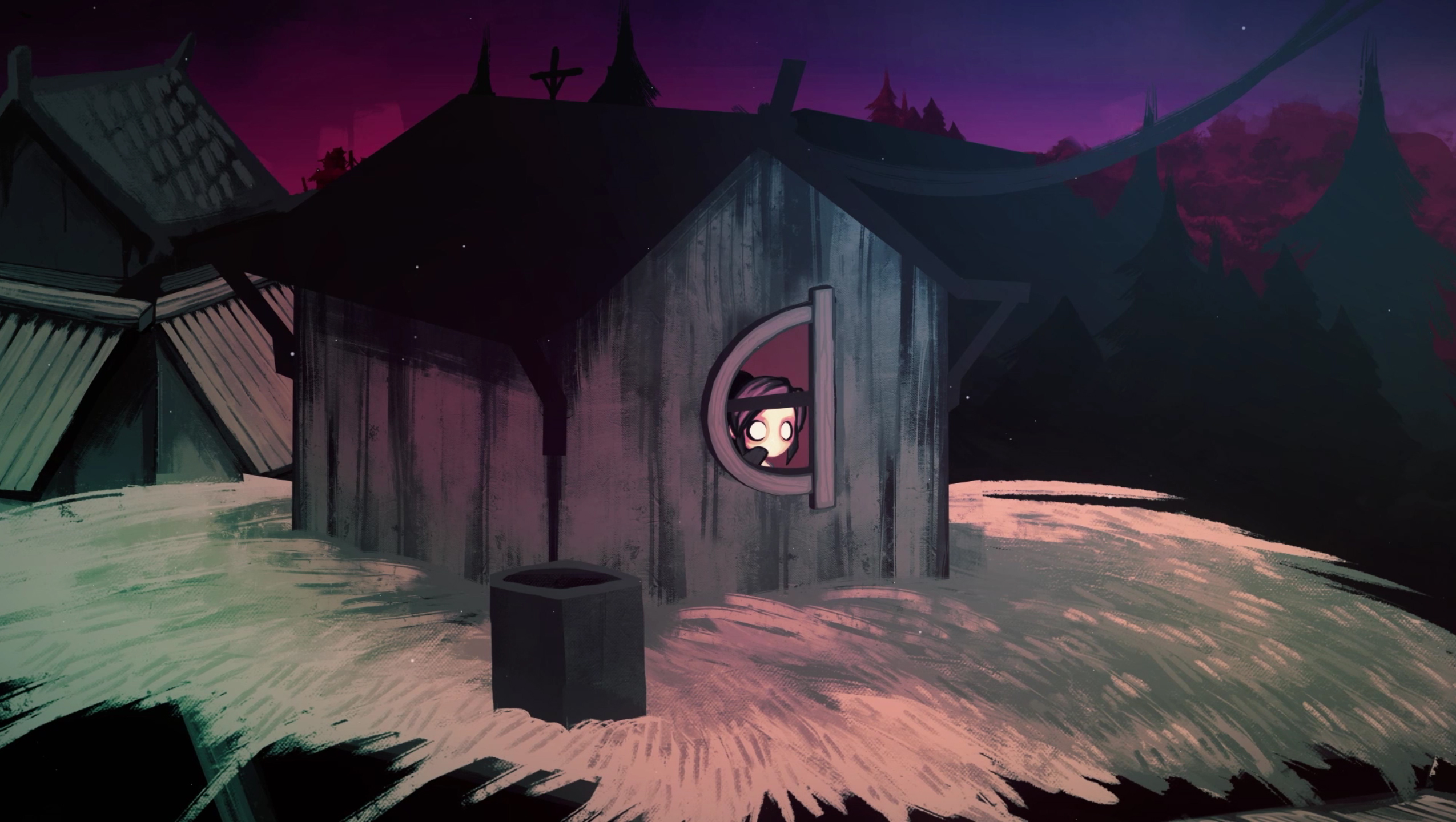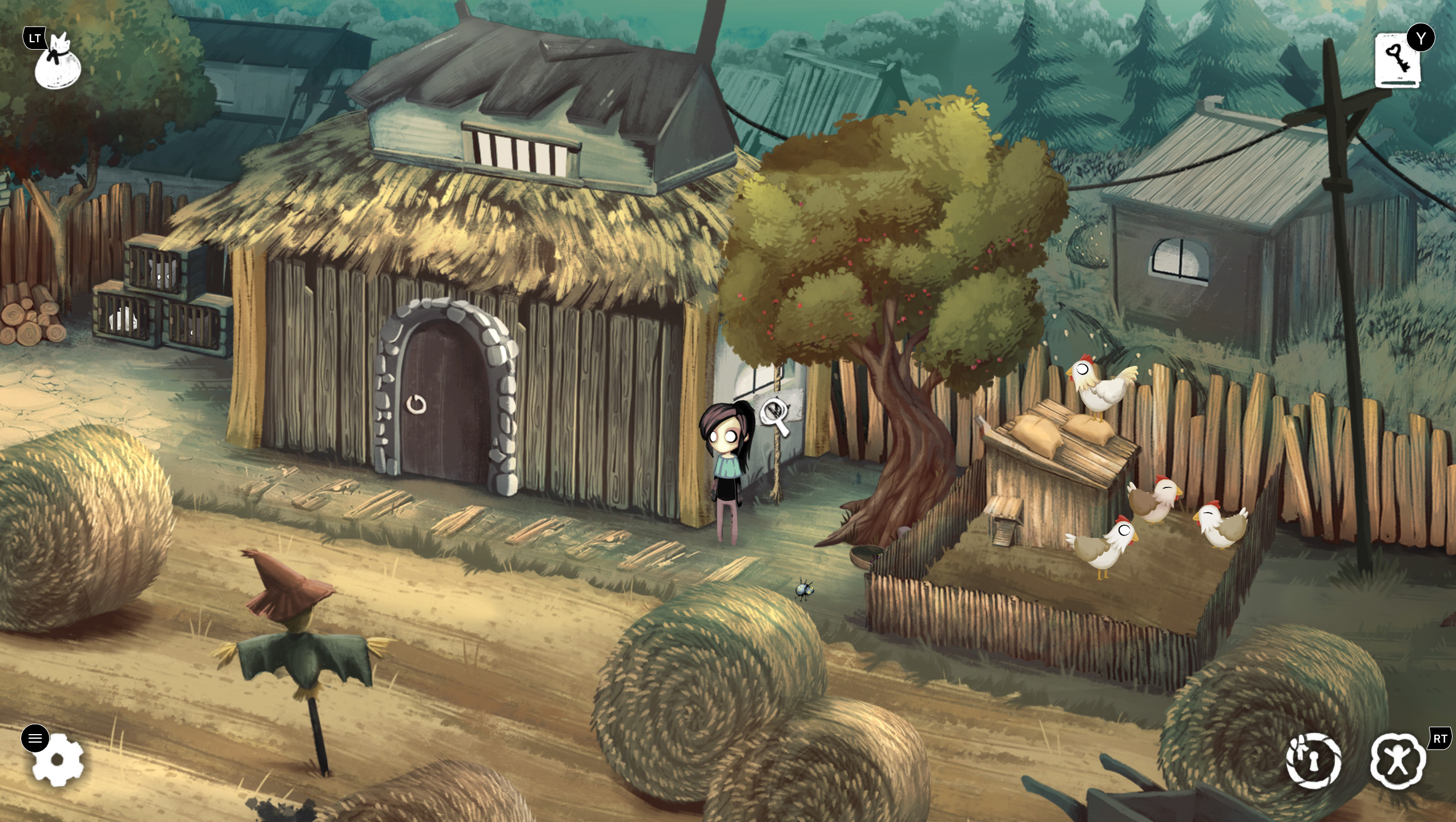On this month’s Digitally Uploaded podcast, my fellow DDNet-ers guessed what Children of Silentown will be like. Their conclusion was Little Nightmares. And I’d have to disagree. There’s no running, no action, due to the point-and-click nature of the game. Thematically, I guess it’s kind of close, but honestly, I wouldn’t compare the titles at all. What Children of Silentown is, however, is spooky, unsettling, and heartfelt. And quite difficult at times.
Silentown is aptly named. Silentown goes silent at night, when the forest awakens. The town is not safe after dusk… or ever, really. The people in town don’t have to be silent during the day, but they can’t go around making a racket either. It’s those who rebel that disappear. There are monsters lurking in the woods. Some people report hearing them sing, but that’s very hush-hush as nobody really wants to hear it happening.
Lucy lives in Silentown with her parents and her cat, a lazy menace named Squinty. Squinty, like all cats, is always sitting in the most inconvenient place possible. Lucy’s cat Squinty is a lazy menace, just like all cats. For me, well, there’s a cat that is literally between my arms as a type. So I took a liking to Squinty, who only has a bit to do with the narrative but is a lovely cat nonetheless. One evening, Lucy’s mother leaves to fetch something from a friend and, like many before her, never returns. Everyone in town suggests not looking for those who disappear. Their missing posters are simply to remind people that they once lived there too. Lucy deeply disagrees; she refuses to live life without her mother.
The adults believe that the rules regarding loud noises, staying in at night, and staying out of the forest will help them all stick together. Really, though, it seems to be tearing them apart. It’s ironic that staying in the dark, metaphorically speaking, is what is distressing Lucy. There’s the perfect amount of fear-based tension in the game, a remarkable feat for a point-and-click adventure. Of the scares, very few are jump-worthy. I used the word “unsettling” to describe the game earlier on, and I’d like to reiterate that here (and probably will again).
The game is controller compatible, which is how I chose to play. Keyboard/mouse is also an option, and it works perfectly fine, I just prefer a controller. As I just mentioned, this is a point-and-click game, and a pretty standard one at that: you need to work through multiple steps of some kind of puzzle to complete one goal that then progresses the narrative. For example, to be able to search the farmer’s field you have to find a hidden key in a beehive, use it to unlock a toolbox in the barn (which is a completely separate area), grab a hammer, and return to the field to use the hammer to let the bunnies loose so the farmer will chase them. There are times when items can be combined to make something new (rope plus hook equals grappling hook, etc). Sometimes tasks get tricky, or multiple are happening all at once, but generally, if I got stuck during these parts I just needed to look around more thoroughly… or try singing.
Lucy makes note of every musical tone she hears. These tones add up to (four) melodies that she can use. Singing can trigger certain things, depending on which song is needed. Each song has its own accompanying minigame/puzzle type; for example, the children’s song triggers a sewing puzzle and mom’s song triggers a pipes puzzle. It’s not a normal pipes puzzle though, it involves using gears to help turn the tiles. These minigames can get quite difficult quite quickly, and is where most of my frustrations outside of technical issues lie with this game. I found myself getting stuck. A lot. Like, a lot a lot.
Very rarely in all of my 37 years has a game made me feel so stupid. I needed a mix of written and video walkthroughs to get through it. Mostly, it was the singing puzzles that had me banging my head against the wall. They appear simple, and some (like most of the sewing one) are. Others, like the pipe one… I just can’t wrap my head around how to solve it. I’m not against difficult games in general, but I do believe difficulty options are key for accessibility. Heck, even a hint after being stuck for ten minutes would be a game-changer
The frustrations, unfortunately, did expand past the minigames. There were several technical issues that distrusted gameplay, again leaving me frustrated. The pause menu doesn’t work at least half the time. This is how to save, quit, and access options, so it’s kind of a big problem. It’s like it’s there but invisible; I can see the cursor but no text. Sometimes in the main game, I get a black screen with only a cursor shown. Luckily a reboot solves it, but quite frankly rebooting the game every ten to fifteen minutes is a pain. Sometimes dialogue doesn’t appear. Sometimes the game just flat-out crashes. These technical issues are excessive, unfortunately.
But let’s take the technical issues out of the picture, and look at the game based strictly on its narrative and gameplay. I’ve seen a lot of reviews compare Children of Silentown to something from Tim Burton, and I can see why: it’s kind of a dark, modern-day fairy tale with muted tones and a creepy soundtrack. However, it can very easily stand on its own without that comparison, which is why I waited this long to even bring it up. The gameplay is pretty standard but also very well done. The minigames could be tweaked a bit; leaving your player feeling stupid isn’t exactly a good thing. But the story overshadows a lot of my complaints: it’s intriguing, it’s heartfelt, it’s scary. It’s not the best game you’ll ever play, but the developers have tried to make something distinct, at least.













